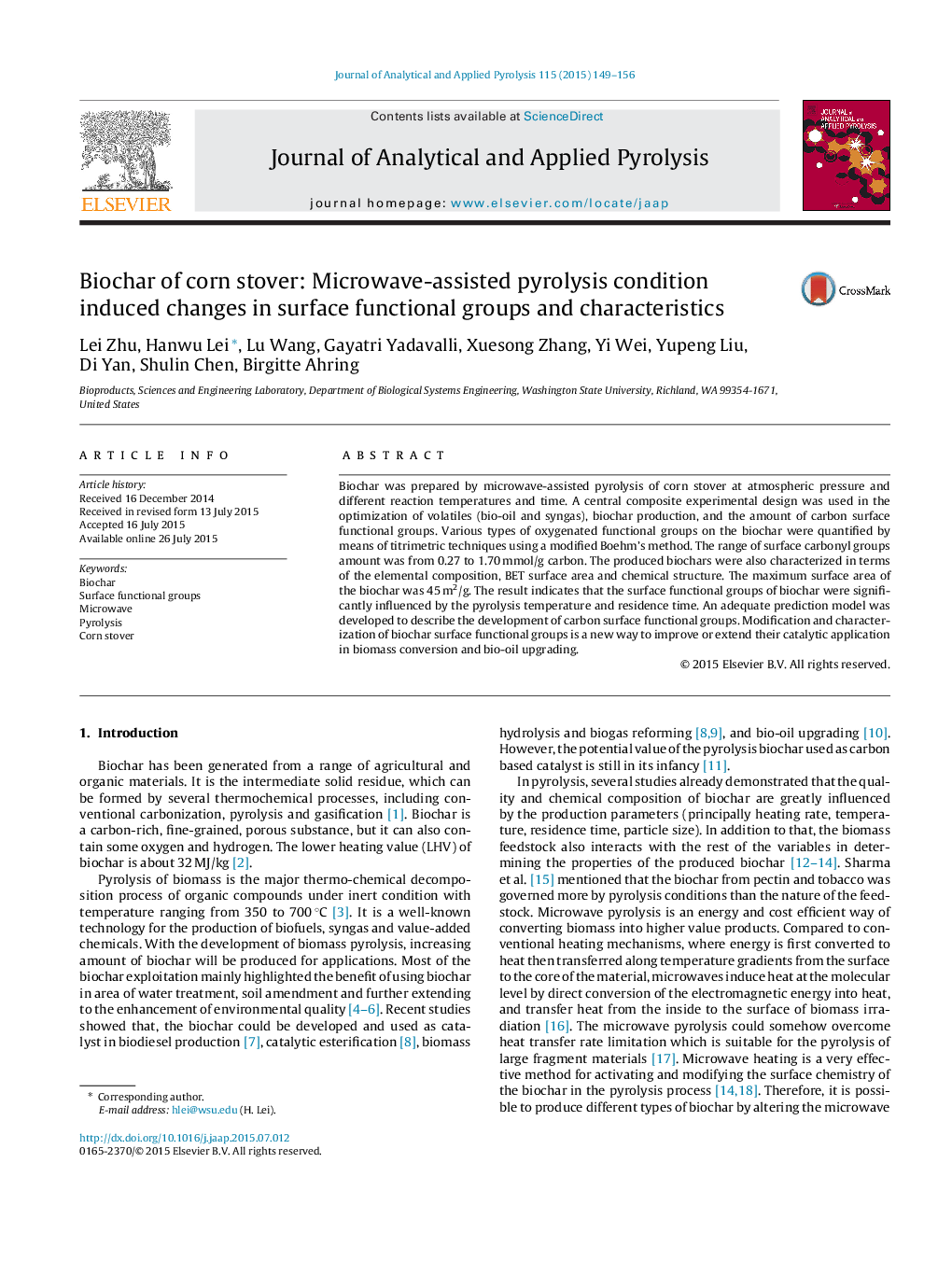| Article ID | Journal | Published Year | Pages | File Type |
|---|---|---|---|---|
| 1197088 | Journal of Analytical and Applied Pyrolysis | 2015 | 8 Pages |
•Biochar surface functionality was controllable by the pyrolysis conditions.•Highest surface area (45 m2/g) was obtained by microwave pyrolysis at 600 °C.•Surface carbonyl and basic groups (0.1–1.7 mmol/g biochar) were modeled.•Modification of biochar surface functionality could improve catalytic application.
Biochar was prepared by microwave-assisted pyrolysis of corn stover at atmospheric pressure and different reaction temperatures and time. A central composite experimental design was used in the optimization of volatiles (bio-oil and syngas), biochar production, and the amount of carbon surface functional groups. Various types of oxygenated functional groups on the biochar were quantified by means of titrimetric techniques using a modified Boehm's method. The range of surface carbonyl groups amount was from 0.27 to 1.70 mmol/g carbon. The produced biochars were also characterized in terms of the elemental composition, BET surface area and chemical structure. The maximum surface area of the biochar was 45 m2/g. The result indicates that the surface functional groups of biochar were significantly influenced by the pyrolysis temperature and residence time. An adequate prediction model was developed to describe the development of carbon surface functional groups. Modification and characterization of biochar surface functional groups is a new way to improve or extend their catalytic application in biomass conversion and bio-oil upgrading.
